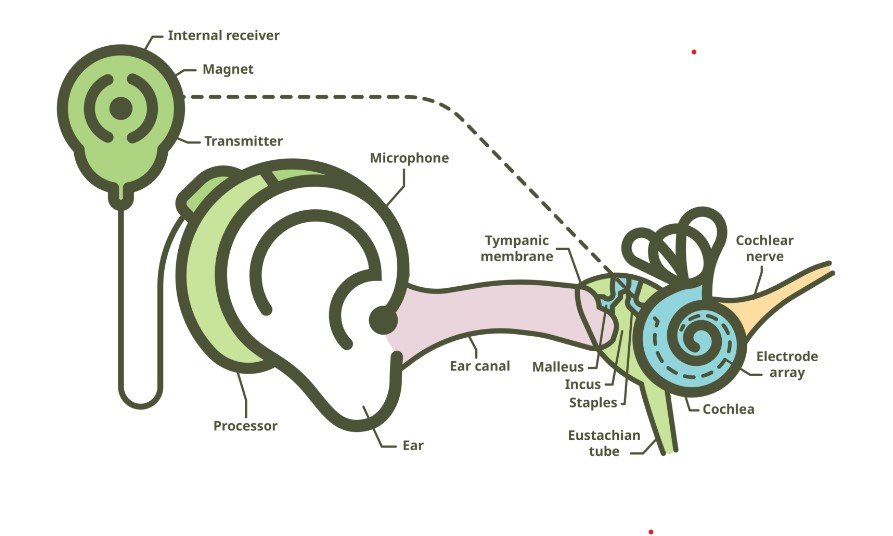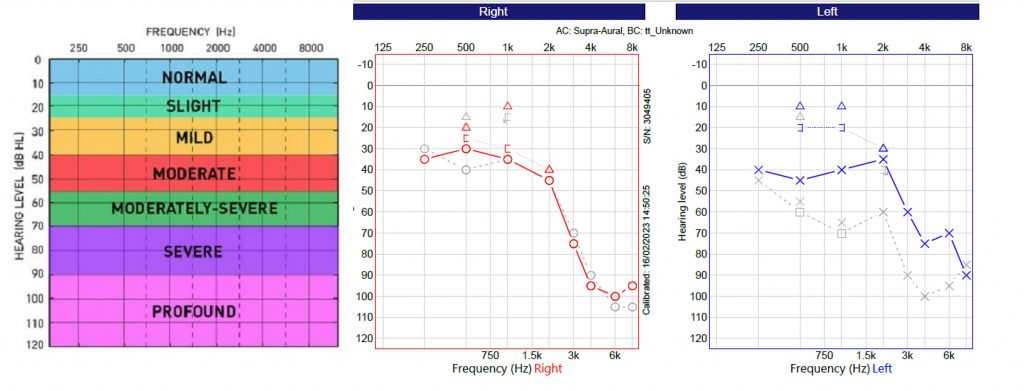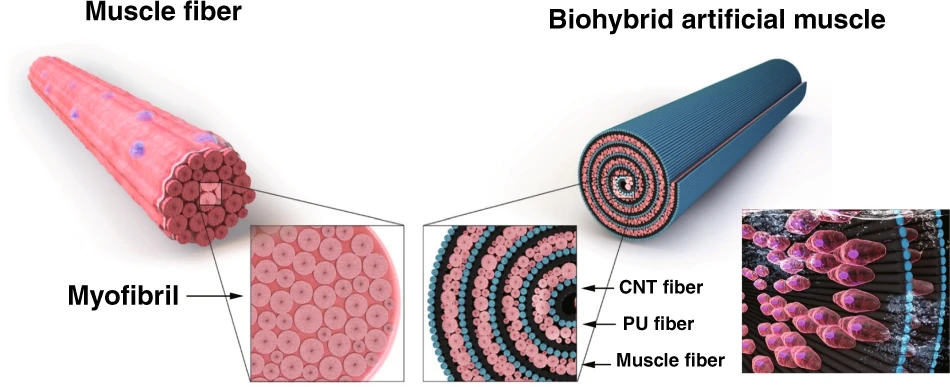
“Blindness separates us from things, but deafness separates us from people.”
Hearing loss currently affects approximately 9 million individuals in England. Projections indicate that by 2035, this number is expected to rise to around 13 million.
A Journey into the World of Cochlear Implants
Attending Nicci Campbell’s workshop on cochlear implants was eye-opening. With a father who battles deafness and relies on hearing aids, I was intrigued to find out more about the candidacy for cochlear implants. Before the workshop, I had a limited understanding of cochlear implants. I mistakenly viewed them as upgraded hearing aids. However, the workshop shattered this misconception. This got me thinking about the gap in public awareness.
The Mechanics of Hearing with a Cochlear Implant

Cochlear implants consist of an external sound processor and an internal implant. The sound processor captures environmental sounds, processes them, and transmits the signal to the implant. Surgically placed under the skin, the implant’s electrodes stimulate the auditory nerve directly, bypassing damaged sensory hair cells in the cochlea. Through auditory training, users learn to interpret the electrical signals.
Are You a Candidate for Cochlear Implants?
Cochlear implants are considered for candidates with severe/profound hearing loss.
- hearing only sounds that are lounder than 80dB HL at two or move frequencies (500Hz, 1,000Hz, 2,000Hz, 3,000Hz and 4,000Hz) bilaterally
- AB words test < 50% (for adults)
The day after attending the workshop, my father had a hearing test, eager to delve deeper, I asked him for his audiology reports to review.

This shows my father’s audiograms from 23/02/2024 compared to 20/11/2023 (shown in grey). I compared his audiology report to the degree of hearing loss (displayed on the left). Seeing this made me feel a lot of sympathy for him, despite not qualifying for cochlear implants, his hearing challenges are significant. Specifically:
- Right Ear: He falls into the severely deaf category for frequencies 3,000Hz and above, and 4,000Hz and above in the profoundly deaf category.
- Left Ear: Although his overall hearing levels are better, he still experiences severe hearing loss for frequencies 4,000Hz and above.
Clip From a Cochlear Implant User
The workshop featured this video clip of Asgar explaining his experiences. I found that it deeply resonated with me. Asgar’s heartfelt account of his children avoiding conversation with him to evade repeating themselves reminded me of my own childhood -my sister and I would employ the same tactic. I think it’s crucial to recognise that hearing loss not only has a physical impact, but it also effects relationships.

“If I were offered a cochlear implant today, I would prefer not to have one. But that’s not a statement about hearing aids or cochlear implants. It’s about who you are.”
Embracing Silence
Discovering that cochlear implants are not universally embraced initially surprised me. Yet, as I delved deeper, I recognised the profound impact of individual differences. What proves effective for one person may not necessarily be the optimal solution for another.
- Complex Adjustment Process
Cochlear implants don’t immediately restore hearing, users must learn to interpret the signals. This adjustment takes time and practice.
- Loss of Residual Hearing
For people with partial hearing loss, cochlear implants can sometimes cause any remaining hearing to be lost.
- Health Risks
There is a small risk of infection with the surgery.
- Lifestyle Considerations
Some people may have other strategies for coping, such as sign language and lip reading.
- Music
While cochlear implants can significantly improve speech, they are not suitable for transmitting the structural features of music.
Pop song:

“The cochlear implant is not just a device; it’s a key to a new world of sound and communication”
Awareness
Public awareness of cochlear implants varies widely. Generally, there’s a growing awareness due to increased media coverage and education initiatives. However, misconceptions and stigmas still exist, such as the belief that they “cure” deafness or that they are appropriate for all individuals with hearing loss. Organisations like RNID work on research and public awareness.

Very well written, with an excellent format and images. You’ve included interesting statistics and related it to personal ideas which…
This is a very well written blog, the format is as if you are talking directly to me. The ideas…
Love the Batman GIF :)
This is an excellent, well written blog. The narrative is engaging and easy to follow. It could be improved by…
This is a well-communicated blog. The it is written well with good use of multimedia. It could be improved with…